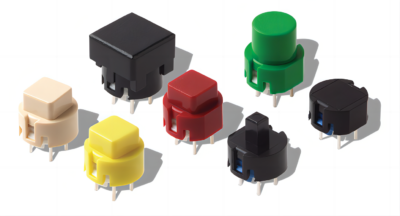Before the article begins, I want to ask you a question. Is the design of the button switch difficult?
If you find designing a button switch difficult, check out this video below.
I have to say he’s pretty good with his hands:)
But we still wish the push-button switches we’re going to use were better if only to look better.
In the of electronic components, LED push button switches are a crucial interface, melding functional reliability with aesthetic integration. A sophisticated design process is essential for creating switches that are not only effective but also elevate the user experience.
So how to design a beautiful and high-quality switch is what we will discuss next.
Technical Proficiency in Design
- Electrical Specifications: Precision in voltage and current ratings is paramount to ensure seamless integration with the device’s electrical system.
- Durability Assessment: Factor in the mechanical lifespan, which involves assessing the switch’s capacity for repeated actuation without performance degradation.
- Environmental Adaptability: A high IP rating (Ingress Protection) is vital for switches used in outdoor or industrial settings, ensuring resistance to dust, water, and other environmental elements.
- Responsive Tactility: The actuation force should offer a satisfying click without requiring excessive pressure, balancing comfort and distinct feedback.
Aesthetic and Ergonomic Considerations
- Visual Harmony: The LED’s color spectrum should align with the device’s design palette, offering both standard and custom hues.
- Illumination Dynamics: Diverse lighting modes (steady, blinking, pulsating) can communicate various statuses or alerts, enhancing the switch’s informational role.
- Customizable Interfaces: Incorporate options for personalized graphics or icons on the switch surface, aiding in intuitive operation and brand alignment.
User Experience Enhancement
- Ergonomic Shaping: Design the switch with user comfort in mind, ensuring ease of use even during prolonged interactions.
- Intuitive Functionality: The switch’s operation should be straightforward, with a design that is easy to understand and use, even for first-time users.
Seamless Device Integration
- Design Consistency: Ensure that the switch complements the overall aesthetic and functional theme of the device it is a part of.
- Mounting Versatility: Offer a variety of mounting options (snap-in, screw-in, etc.) to accommodate different device designs and installation requirements.
Advanced Features for Next-Generation Devices
- Smart Connectivity: Explore integration with IoT (Internet of Things) for smart functionality, allowing switches to interact with other connected devices.
- Energy Efficiency: Implement low-power LED technology to enhance battery life and reduce energy consumption.
Conclusion
In crafting high-quality LED push button switches, a meticulous approach that combines technical precision with creative design nuances is essential. These switches should not only meet the functional demands of diverse applications but also contribute to the aesthetic and tactile experience of the end-user. For professionals in electronics, understanding these multifaceted design considerations is key to developing switches that stand out in both performance and appearance.



